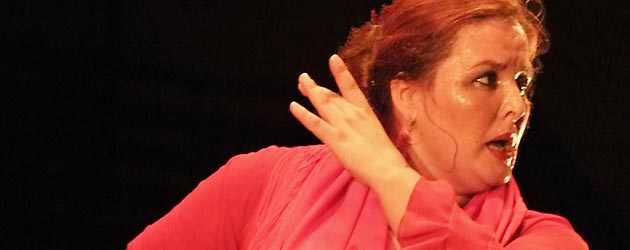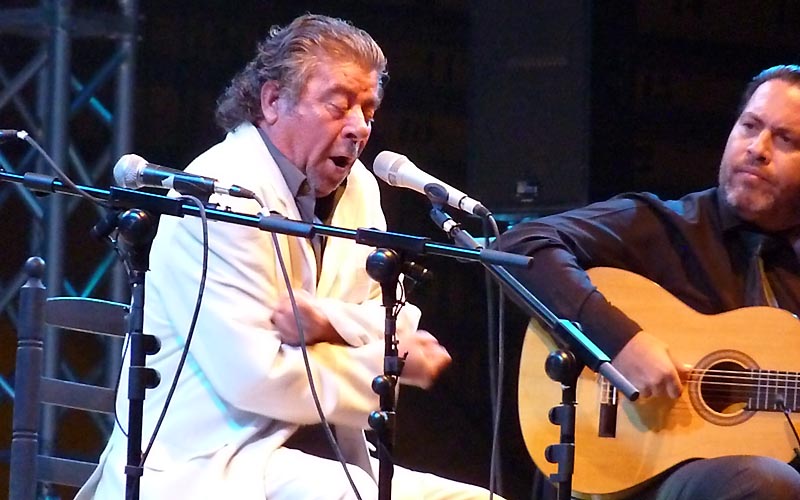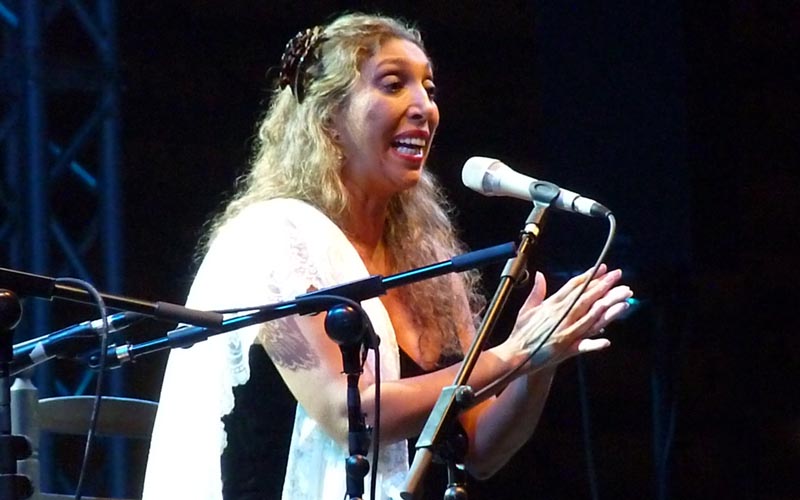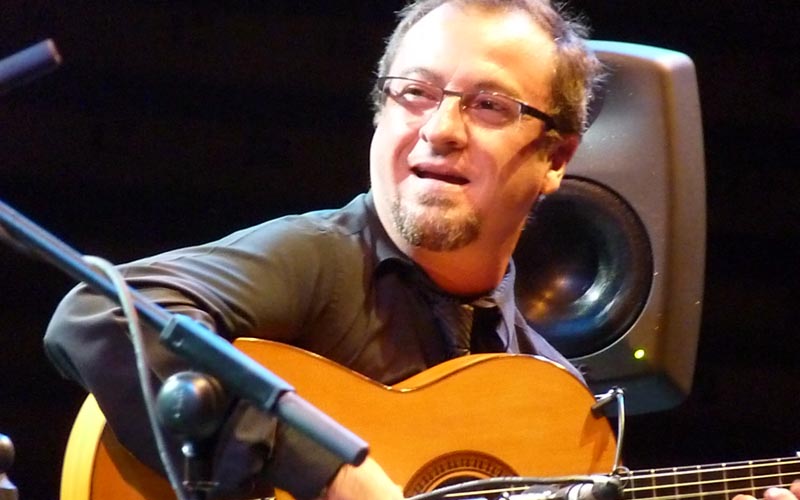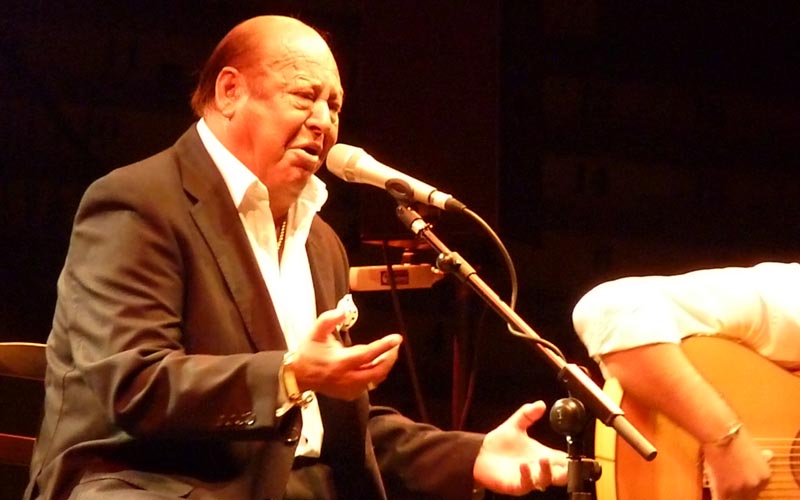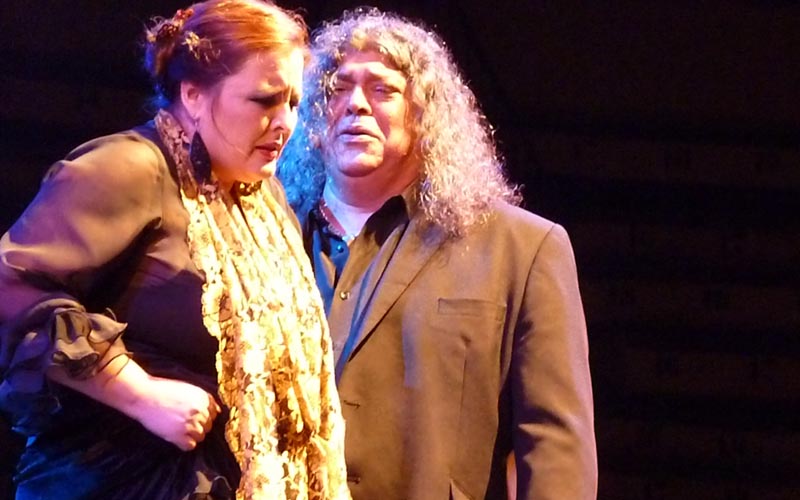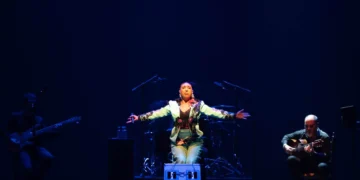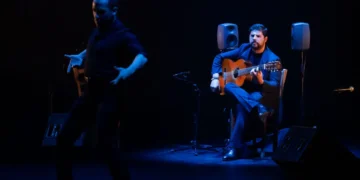Text and photos: Estela Zatania
DEDICADA TO THE FLAMENCO PEÑAS
Saturday, September 7th, 2013. 10:00pm. Jerez de la Frontera Bullring
WHAT IF YOU THREW A PARTY AND NO ONE CAME?
Maybe it was the price of tickets, or the prohibition against entering with food and drink (with aggressive frisking and searching at the door according to some), or because it had rained in the morning, or maybe it was just the lingering recession, but not even the presence of cult figure Juan Moneo “El Torta” (who gave a mediocre performance at the Viernes Flamencos in this city just last month), could barely attract a thousand people for the forty-sixth Fiesta de la Bulería when in years past there have been up to eight thousand souls packed into the bullring. And it wasn’t the usual audience. These were middle-aged educated people who stayed put in their seats and there was no singing and dancing up in the stands. Like the saying goes, “be careful what you wish for, it might come true”. No more party atmosphere or spontaneity at the Fiesta de la Bulerías…just a sad coldness.
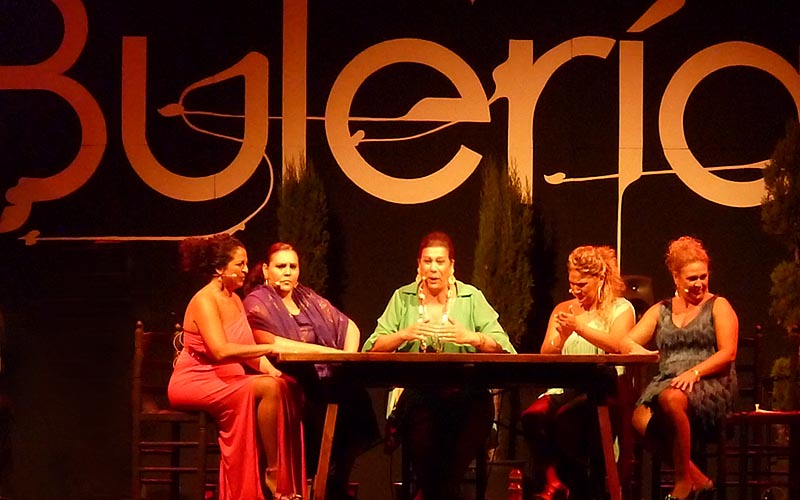
It was a respectable program, largely based on women performers, without this resulting inferior in any way. Master of ceremonies Pepe Marín named the members of the opening group “Jerez es Flamenca”: Macarena Moneo, Ana de los Reyes, Rosario Soto, Rocío la del Mono and Carmen la Cantarota, from the great flamenco families of Jerez. It was almost the best part of the evening. The typical scene of knocking out rhythm on a wooden table, without guitar, like in the taverns and field barracks of years ago, taking turns with bulerías, singing and dancing, five women conjured up the Jerez essence in all its glory. Energetic compás, personality and plenty of flavor. And to think that until not too long ago it was the custom that married women did not sing outside the home.
But this is the year 2013, flamenco evolves and transforms, and the Fiesta de la Bulería received the young Huelva singer “Argentina” with Jerez guitarist José Quevedo “Bola”, the cajón of José Carrasco and the palmas of Torombo and Oruco. The girl’s luminous crystalline voice, as sweet and swift as that of a lyrical singer, delivered a heavy-duty choice of cantes: tientos tangos with Triana styles, bulería por soleá sounding of Jerez thanks to Bola, malagueño of Chacón with abandolao “from my third recording”, ending with an original arrangement of jabera with variable tempo. And there was still the siguiriyas, on the seventh fret in A-position I might add, executed with loving tidiness like everything young Argentina does, ending with an intense interpretation of Juanichi el Manijero’s closing that got the audience to their feet. Cantiñas, bulerías with winks to Paquera and Lole and Manuel and fandangos from her hometown to end up.

After intermission, dancer María del Mar Moreno came on with her singers Antonio and Manuel Malena and “El Quini”, the guitars of Santiago Moreno and Malena, Jr. and the compás and dancing of Fernando Jiménez, Bo and Alex de la Gitanería. Mature and stately in taranto with tangos ending, followed by a bulerías interlude with the dancing of Fernando Jiménez, and María returned dressed in electric red to dance soleá that leads into the compás of romance and bulerías. The dancer hadn’t performed at this event in over a decade, and was very well-received.
Esperanza Fernández was accompanied on guitar by Bola who constantly surprised us with original bits and pieces. A variety of cantiñas played in E-position, an arrangement of malagueña with abandolao ending, siguiriyas and an assortment of tangos ranging from Triana to Repompa, passing through Las Grecas and a side-trip to Granada. She changed shoes for bulerías because Esperanza is an excellent dancer, and always generous with this talent when it comes to bulerías.
Juan Moneo “El Torta”, the star of the night, was the last to perform. On this occasion, with the audience duly controlled and contained, there were no young people to chant his name or shout encouragement…there was no sparkle. After martinete, Paco Lara accompanied him for malagueña, more free-form cante with fandangos (lots of non-rhythmic cante in a row), and finally bulerías with one of his popular songs as an encore, bringing the evening to a close at half past three.
Descubre más desde Revista DeFlamenco.com
Suscríbete y recibe las últimas entradas en tu correo electrónico.


